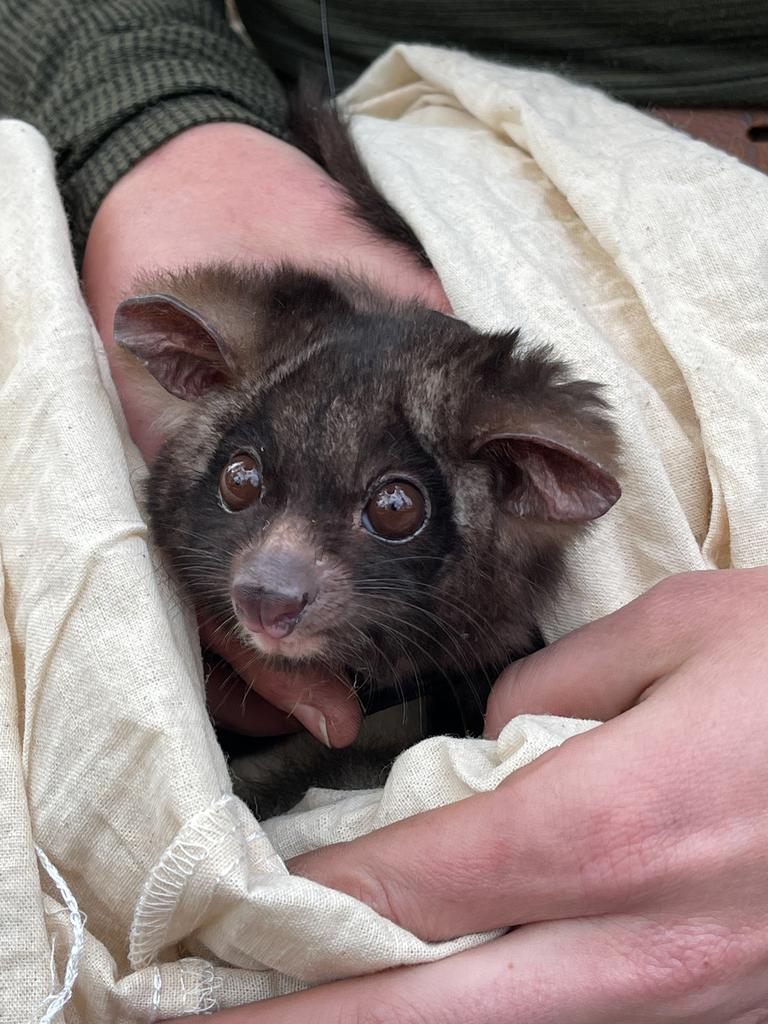WWF-Australia campaign to stop logging in ‘crucial’ southern NSW forest
Activists have warned that one of the last remaining strongholds of an endangered species is under threat from this activity.
New images have revealed the devastation activists say has been wreaked by logging on an important forest in southern NSW as the fight to save one of Australia's most threatened species heats up.
Over the past 20 years, the population of greater gliders – a critically endangered marsupial – has fallen by a whopping 80 per cent, decimated by land clearing, climate change and widespread bushfires.
One of the species’ last strongholds in southern NSW sits in Tallaganda State Forest, a sprawling woodland located beside Tallaganda National Park and wedged between Canberra and Batemans Bay.
The World Wildlife Fund for Nature-Australia has warned that the crucial habitat is now under threat after bulldozers were brought in by Forestry Corporation of NSW (FCNSW) amid logging operations in the area.


“This habitat is ground zero in the race to save this critically threatened species,” WWF-Australia scientist Kita Ashman said.
“We have written to NSW Environment Minister Penny Sharpe asking her to urgently intervene to stop the logging, and we are calling on the federal government to scrap exemptions for Regional Forestry Agreements that enable the continued destruction.”
Last year, the status of the greater glider – the largest of the glider species – was uplisted by federal Environment Minister Tanya Plibersek.
The species is now listed as critically endangered by the federal government, while the NSW government still lists it as only being endangered.
The glider is believed to reside in a stretch of territory spanning eastern Queensland, NSW, and Victoria that was devastated by bushfires.
On the NSW south coast, the 2019-20 Black Summer bushfires destroyed habitat in and around the Batemans Bay and Moruya areas.
In the aftermath of the fires, Dr Ashman said WWF-A had worked with experts to identify Tallaganda as a priority location for glider recovery.
She said researchers invested more than $300,000 into two research projects and had spent as long as two months researching the area.


During a two-night stay in the woodland area, researchers reported spotting 96 greater gliders.
“It was incredible. It’s the only place I’ve ever seen where greater gliders were the dominant species,” Dr Ashman said.
“In most other places where greater gliders were once abundant they are disappearing.
“To know this habitat is being logged is extremely upsetting.”
Under agreements first struck two decades ago, state forestry companies across the country are allowed to circumvent federal rules and log native forests for timber and woodchips.
In NSW, the practice has come under renewed scrutiny by campaigners and local groups following bushfires and the Victorian government's decision to expedite an end to the practice.
The Bob Brown Foundation, founded by the former Greens leader, led a recent campaign targeting Labor leaders to commit to banning native forest logging across the country.

Local activist Takessa Frank last year led a campaign garnering more than 20,000 signatures that called on the NSW government to itself commit to ending native forest logging.
Activists say the practice destroys crucial habitat for endangered species and is not financially sustainable, while proponents say logging provides much-needed jobs and wood supply.
In a statement about the Bob Brown Foundation’s campaign, FCNSW said state forests produced sawlogs for structural timber like flooring, power poles and firewood for “affordable home heating”.
“The full range of forest and wood products has value to communities,” the spokesperson said.

“Timber is the most renewable building product available and (...) plays a large, sustained role in mitigating climate change.
“Timber harvesting is heavily regulated to balance the community’s need for timber with protecting important environmental features.”
For scientists, those objectives run up against their mission to protect greater gliders, including in NSW state forests.
Specially designed nest boxes were installed by WWF-A in burnt forest in Tallaganda National Park in collaboration with ANU.
The boxes are designed to see if hi-tech homes could help increase greater glider numbers.
In the neighbouring state forest, GPS collars were attached to gliders in burnt and unburnt forest in partnership with The University of Sydney.

The collars were to be used by researchers todiscover how fire-damaged habitat alters greater glider behaviour.
“The GPS collars have now been removed, but we don’t know if any of those greater gliders, who we watched and came to know, have been killed,” Dr Ashman said.
“We also don’t know if any of the greater glider families that moved into nest boxes have been harmed. These animals could easily be moving between the national park and the logging area.
“Aside from directly impacting the local population of greater gliders, the logging threatens the viability of the research that has been under way to protect the species.”



